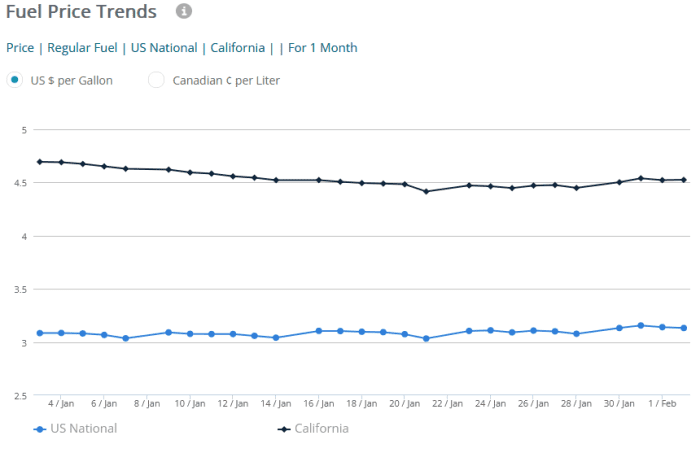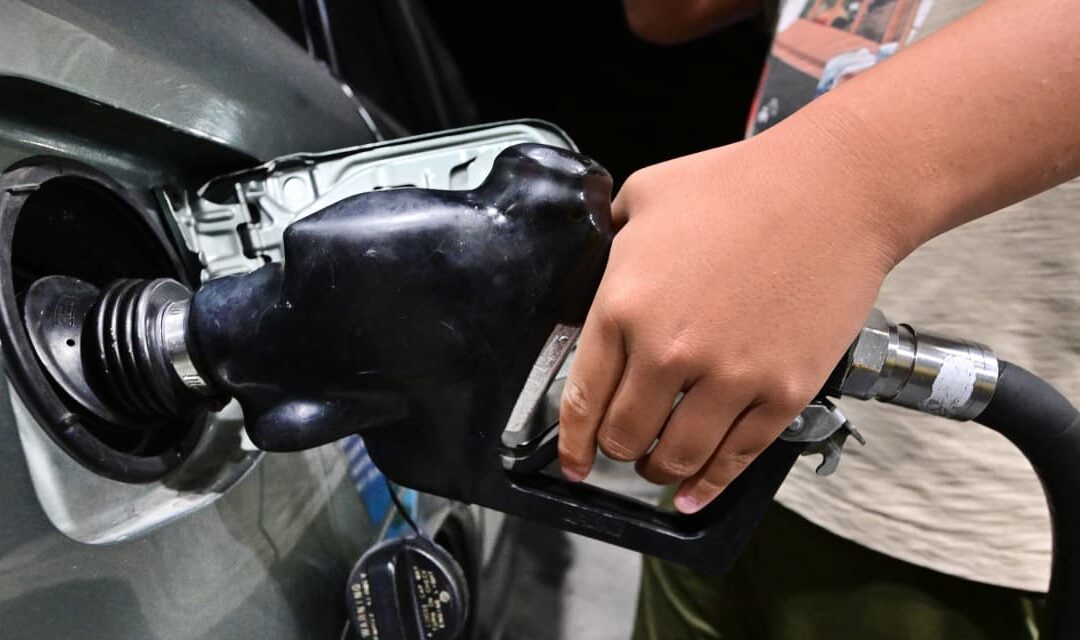Gasoline at the pump costs more than it did a month ago, but U.S. drivers are likely to face even bigger gains by late February as refinery-maintenance season kicks in.
The average U.S. retail price of regular unleaded stood at $3.132 a gallon early Friday afternoon, according to data from GasBuddy, up 4.7 cents a gallon from a month ago.
U.S. retail gasoline prices have climbed from a month ago, GasBuddy data show.
GasBuddy
Gas prices have been inching higher, primarily due to a rise in oil prices on the back of Houthi attacks on vessels in the Red Sea and the late January attack on U.S. troops in Jordan, said Patrick De Haan, head of petroleum analysis at GasBuddy. Those events have raised the risk of escalation that could impact oil supply and further shipping delays, he said.
For the month of January, global benchmark crude futures
BRN00,
BRNJ24,
posted a gain of 6.1%, while U.S. benchmark crude
CLH24,
CL.1,
climbed 5.9%.
Futures prices for reformulated gasoline
RBH24,
bottomed out in December, falling to a two-year low, said Brian Milne, product manager, editor, and analyst at DTN, so part of the increase in retail gas prices is the rebound from that low.
Harsh winter weather conditions in mid- to late-January reduced U.S. gasoline production, including in Texas, so that’s also provided upside price support, he said.
Read: Oil traders care more about North Dakota weather than Red Sea missile attacks
The gasoline market, however, typically sees a seasonal rise in prices starting around mid-February, as refinery maintenance usually ramps up this month, and the market sees the start of a shift toward summer gasoline standards, said De Haan.
Refineries switch to making summer-grade gasoline, which is more environmentally friendly, ahead of the nation’s May 1 compliance date.
At the same time, gas demand typically starts building again in February and into the spring, De Haan said.
Over in California, southern California is the first area of the nation to change to lower-RVP [Reid vapor pressure] summer gasoline because of requirements from the California Air Resources Board, he said. RVP is measure of gasoline volatility and a lower RVP means it’s less likely to evaporate and contribute to air pollution.
The state also has an “acute problem of declining refinery capacity,” said De Haan. Much of that is attributed to incentives for refiners to shift towards producing biofuels, he said.
California has seen its refinery capacity drop 10% compared with 2018, while the national number is down around 3.8%, with “oil-friendly” Texas seeing a fall of just 2%, he said.
This is why California will likely have “another rocky year — it needs more capacity badly, or for demand to drop,” De Haan said.
On Friday afternoon, the average price for a gallon of regular unleaded in California sold for $4.524, GasBuddy data show. That’s down 16.3 cents from a month ago, but 5.3 cents from a week ago.

Retail gas prices in California tend to much higher than the national average, according to GasBuddy data.
GasBuddy
The state is encouraging refiners to hold greater inventory to “guard against price jumps in the spot market,” said DTN’s Milne.
That comes from regulations that took effect in June 2023, requiring refinery operators in California to provide monthly refinery margin reports and daily reports on transactions in the spot market, he said. The state also requires reports on maintenance at refineries, and on imports, he said.
Drivers in California will likely see gas prices continue their seasonal rise in the state until April or May, said De Haan. He expects the rest of the nation to see smaller increases until mid- to late-February, before the nationwide uptrend begins.
Milne said, however, that while national gasoline prices do trend higher in the Spring, he expects the price upturn to be “capped by structural changes, including slowing gasoline demand.”
Average retail gas prices may see a 20-cent per gallon or greater increase by March, with a similar gain for California, he said. “Unexpected refinery outages would accelerate price gains.”









